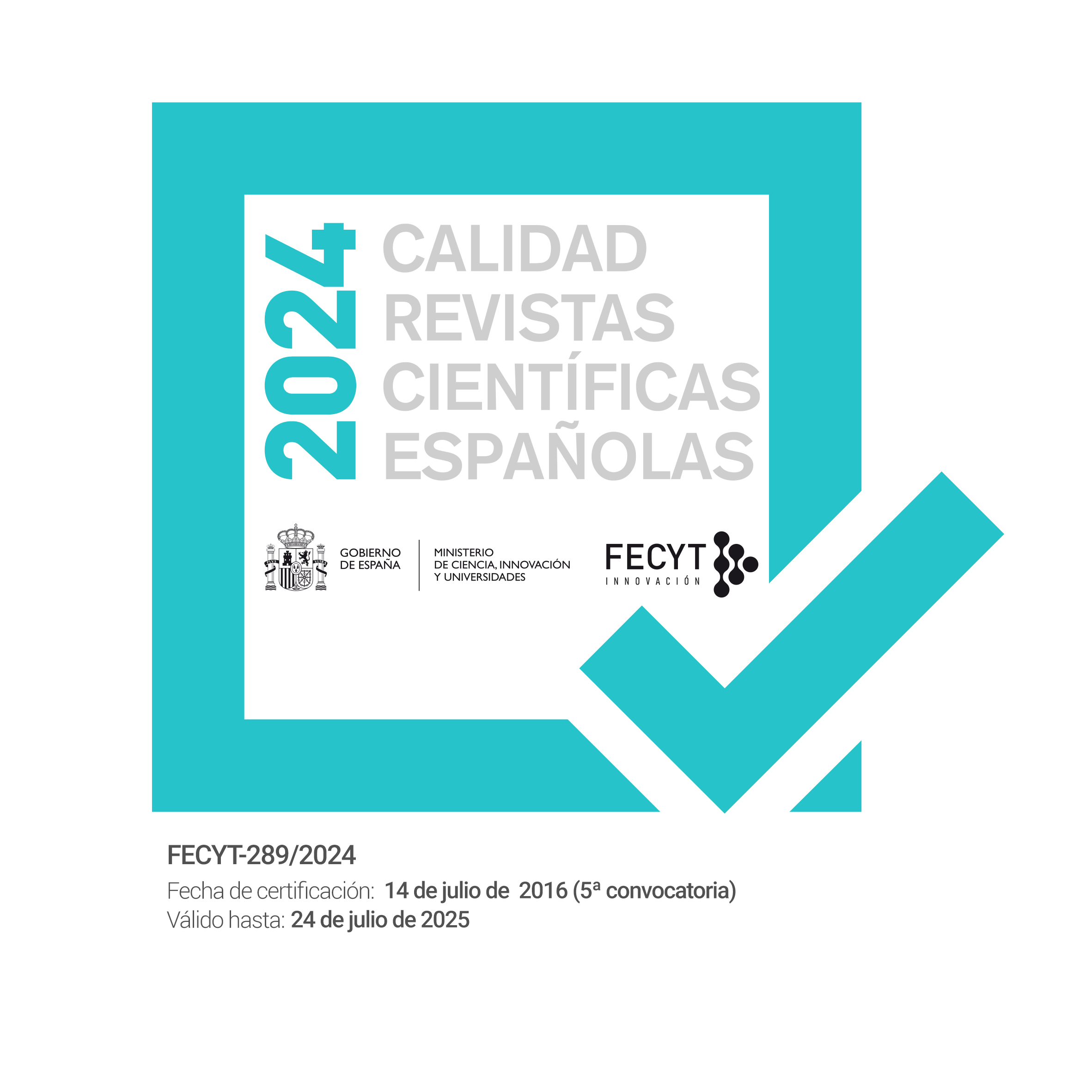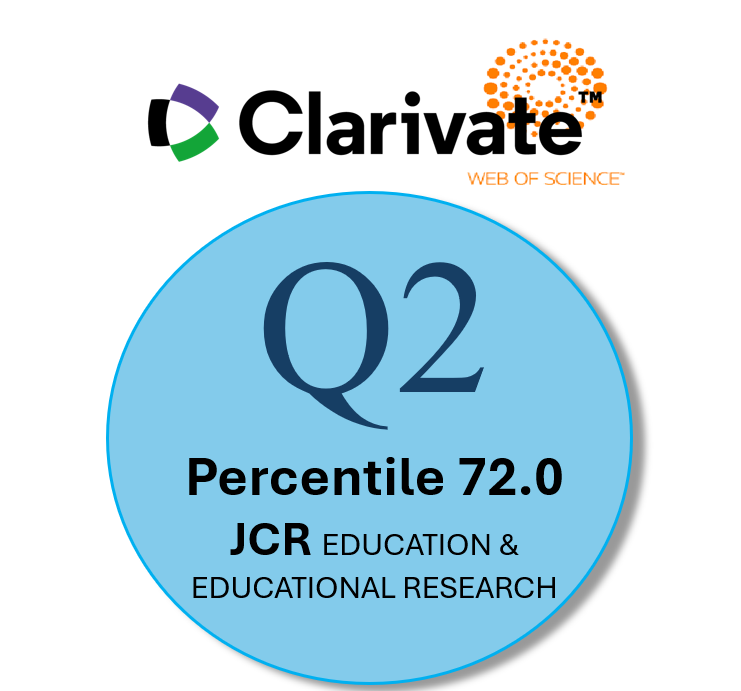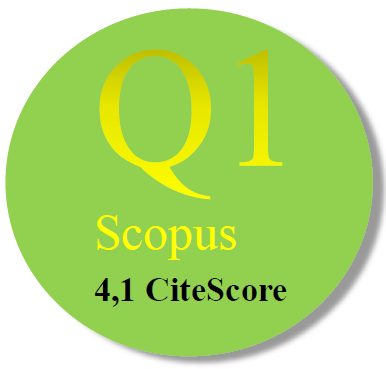Medical Education and Cognitive Load: Study of the Interaction with Learning Objects in Virtual Reality and 360º Video
Abstract
Different studies have shown that virtual reality (VR) is an educational technology with great potential for the development of skills. Its integration requires the mobilization of cognitive resources by the students, so the design of the training actions with VR must be optimal. In this sense, the objectives of this study is to know the cognitive load produced by the interaction with learning objects produced in the VR modality and with objects in 360º, as well as to analyze the evaluation of the same by the students and their relationships. To do this, 136 medical students answered two questionnaires: cognitive load and evaluation of the quality of the training action. The results showed high levels of relevant cognitive load and low levels of mental effort, internal and extrinsic cognitive load. In addition, the self-perception of the quality of the training action is high, with levels of correlation between the different dimensions. Therefore, it concludes by demonstrating the potential of VR as an educational technology and opens new avenues for related research.
Downloads
-
Abstract1636
-
PDF (Español (España))856
References
Abdulrahman, E. y Al Osman, H. (2018). A virtual reality role-playing serious game for experiential learning. Interactive Learning Environments. https://doi.org/10.1080/10494820.2019.1703008
Alfalah, S.F.M., Falah, J.F.M., Alfalah, T., Elfalah, M., Muhaidat, N. y Falash, O. (2019). A comparative study between a virtual reality heart anatomy system and traditional medical teaching modalities. Virtual Reality 23, 229–234 (2019). https://doi.org/10.1007/s10055-018-0359-y
Álvarez, I.M., Manero, B., Morodo, A., Suñé-Soler, N., y Henao, C. (2023). Realidad Virtual Inmersiva para mejorar la competencia de gestión del clima del aula en secundaria. Educación XX1, 26(1), 249-272. https://doi.org/10.5944/educxx1.33418
Ausín Villaverde, V., Rodríguez Cano, S., Delgado Benito, V., y Toma, R. B. (2023). Evaluación de una APP de realidad aumentada en niños/as con dislexia: estudio piloto: [Evaluation of an augmented reality APP for children with dyslexia: a pilot study]. Pixel-Bit. Revista De Medios Y Educación, (66), 87–111. https://doi.org/10.12795/pixelbit.9563
Barroso, J. y Cabero, J. (2016). Evaluación de objetos de aprendizaje en realidad aumentada: estudio piloto en el grado de Medicina. Enseñanza & Teaching, 34(2), 149-167.
Caballero, M.P., Mejía, C. y Romero, J. (2020). Realidad aumentada vs. realidad virtual: Una revisión conceptual. Teknos. Revista Científica, 19(2), 10-19. http://dx.doi.org/10.25044/25392190.991
Cabero, J., Valencia, R. y Llorente, C. (2022a). Ecosystem of emerging technologies: augmented, virtual and mixed reality. Tecnología, Ciencia y Educación, 23, 7-22. https://doi.org/10.51302/tce.2022.1148.
Cabero‐Almenara, J., Guillén‐Gámez, F. D., Ruiz‐Palmero, J., y Palacios‐Rodríguez, A. (2022b). Teachers' digital competence to assist students with functional diversity: Identification of factors through logistic regression methods. British Journal of Educational Technology, 53(1), 41-57. https://doi.org/10.1111/bjet.13151
Cabero-Almenara, J., Gutiérrez-Castillo, J. J., Palacios-Rodríguez, A., y Guillén-Gámez, F. D. (2022c). Digital Competence of university students with disabilities and factors that determine it. A descriptive, inferential and multivariate study. Education and Information Technologies, 1-20. https://doi.org/10.1007/s10639-022-11297-w
Calderón, S. J., Tumino, M. C. y Bournissen, J. M. (2020). Realidad virtual: impacto en el aprendizaje percibido de estudiantes de Ciencias de la Salud. Tecnología, Ciencia y Educación, 16, 65-82. https://doi.org/10.51302/tce.2020.441
Cárdenas, M. (2018). Carga cognitiva en la lectura de hipertexto. Zona Proxima, 28, 42-56.
Centre for Education Statistics and Evaluation (2017). Cognitive load theory: Research that teachers really need to understand. Centre for Education Statistics and Evaluation.
Chang, Y., Chou, Ch., Chuang, M., Li, W. y Tsai, I. (2020). Effects of virtual reality on creative design performance and creative experiential learning. Interactive Learning Environments. https://doi.org/10.1080/10494820.2020.1821717
Di Natale, A., Repetto, C., Riva, G. y Villani, D. (2020). Imersive virtual reality in K-12 and higher education: A 10-year systematic review of empirical research. British Journal of Educational Technology, 51(6), 2006-2033. https://doi.org/10.1111/bjet.13030
Falcade, A., Abegg, I. y Falcade, L. (2020). Teoria da carga cognitiva: aproximaÇäo de ideias e conceitos. InteraÇao, 45, 3, 795-810. https://doi.org/10.5216/ia.v45i3.64208
Feldon, D.F., Callan, G., Juth, S. y Jeong, S. (2019). Cognitive Load as Motivational Cost. Educational Psychology Review, 31, 319–337. https://doi.org/10.1007/s10648-019-09464-6
Fromm, J., Radianti, J., Wehking, Ch., Stieglitz, S., Majchrzak, T. y Vom Brocke, J. (2021). More than experience? - On the unique opportunities of virtual reality to afford a holistic experiential learning cycle. The Internet and Higher Education, 50, 1-14, https://doi.org/10.1016/j.iheduc.2021.100804
Hart, S. G., y Staveland, L. E. (1988). Development of NASA-TLX (task load Index): Results of empirical and theoretical research. Elsevier Science Publishers.
King, S. A., Dzenga, C., Burch, T., y Kennedy, K. (2020). Teaching partial–interval recording of problem behavior with virtual reality. Journal of Behavioral Education, https://doi.org/10.1007/s10864-019-09363-4
Korbach, A., Brünken, R. y Park, B. (2017). Measurement of cognitive load in multimedia learning: a comparison of different objective measures. Instructional Science, 45, 515-536. https://doi.org/10.1007/s11251-017-9413-5
Kukulska-Hulme, A., Bossu, C., Charitonos, K., Coughlan, T., Maina, M., Ferguson, R., FitzGerald, E., Gaved, M., Guitert, M., Herodotou, C., Prieto-Blázquez, J., Rienties, B., Sangrà, A., Sargent, J., Scanlon, E., y Whitelock, D. (2022). Innovating Pedagogy 2022: Open University Innovation Report 10. The Open University.
Leppink, J., Paas, F., Van Gog, C. y Van der Vleuten, J. (2014). Effects of pairs of problems and examples on task performance and different types of cognitive load. Learning and Instruction, 30, 32-42. https://doi.org/10.1016/j.learninstruc.2013.12.001.
Lin, F. y Kao, M. (2018). Mental effort detection using EEG data in E-learning contexts. Computers & Education, 122, 63-79. https://doi.org/10.1016/j.compedu.2018.03.020.
Llorente-Cejudo, C., Palacios-Rodríguez, A., y Fernández-Scagliusi, V. Learning Landscapes and Educational Breakout for the Development of Digital Skills of Teachers in Training. Interaction Design & Architecture(s) Journal, 53, 176-190. https://doi.org/10.55612/s-5002-053-009
Mayer, R.E. (2003). Multimedia learning. EE.UU. Cambridge University press.
McGovern, E., Moreira, G., y Luna-Nevarez, C. (2020). An application of virtual reality in education: Can this technology enhance the quality of students’ learning experience? Journal of Education for Business, 95(7), 490-496. https://doi.org/10.1080/08832323.2019.1703096
Morris, Th. (2018). Experiential learning – a systematic review and revision of Kolb’s model. Interactive Learning Environments, 28(8). https://doi.org/10.1080/10494820.2019.1570279
Navarro, F., Martínez, A. y Martínez, J.M. (2019). Realidad virtual y realidad aumentada. Ediciones de la U.
Ogbuanya, Th. y Ogbonna, N. (2018). Investigating the Effectiveness of Desktop Virtual Reality for Teaching and Learning of Electrical/Electronics Technology in Universities. Computers in the Schools, 35(3), 226-248. https://doi.org/10.1080/07380569.2018.1492283
Ortega-Rodríguez, P. J. (2022). De la realidad extendida al metaverso: una reflexión crítica sobre las aportaciones a la educación. Teoría de la Educación. Revista Interuniversitaria, 34(2), 189-208. https://doi.org/10.14201/teri.27864
Paas, F, Tuovinen, J. E., Tabbers, H. y Van Gerven, P. (2003). Cognitive Load Measurement as a Means to Advance Cognitive Load Theory. Educational Psychologist, 38(1), 63-71.
Paas, F. (1992). Training Strategies for Attaining Transfer of Problem-Solving Skill in Statistics: A Cognitive-Load Approach. Journal of Educational Psychology, 84(4), 429-434.
Roda-Segarra, J., Mengual-Andrés, S. y Martínez-Roig, R. (2022). Using Virtual Reality in Education: a bibliometric analysis. Campus Virtuales, 11(1), 153-165. https://doi.org/10.54988/cv.2022.1.1006
Rodríguez-Hoyos, C., Fueyo Gutiérrez, A., y Hevia Artime, I. (2021). Competencias digitales del profesorado para innovar en la docencia universitaria. Analizando el uso de los dispositivos móviles. Pixel-Bit. Revista De Medios y Educación, 61, 71-97. https://doi.org/10.12795/pixelbit.86305
Salica, M. A. (2019). Carga cognitiva y aprendizaje con TIC: estudio empírico en estudiantes de química y física de secundaria. Revista Iberoamericana de Tecnología en Educación y Educación en Tecnología, (24), 67-78. http://dx.doi.org/10.24215/18509959.24.e08
Sampieri, R., Fernández, C. y Baptista, M. (2010). Metodología de la Investigación. MacGraw-Hill.
Sweller, J. (2010). Element interactivity and intrinsic, extraneous and germane cognitive load. Educational Psychology Review, 22(2), 123-138.
Sweller, J., Van Merrienboer, J. y Paas, F. (1998). Cognitive architecture and instructional design. Educational Psychology Review, 10(3), 251-296.
Tang, Y., Au, K., Lau, H., Ho, G. y Wu, C. (2020). Evaluating the effectiveness of learning design with mixed reality (MR) in higher education. Virtual Reality, 24, 797–807, https://doi.org/10.1007/s10055-020-00427-9.
Toala-Palma; J., Arteaga-Mera, J., Quintana-Loor, J y Santana-Vergara, M. (2020). La Realidad Virtual como herramienta de innovación educativa. Episteme Koinonia. Revista Electrónica de Ciencias de la Educación, Humanidades, Artes y Bellas Artes, 8(5), 270-286. http://dx.doi.org/10.35381/e.k.v3i5.835
Tsekhmister, Y. V., Konovalova, T., Tsekhmister, B. Y., Agrawal, A., y Ghosh, D. (2021). Evaluation of Virtual Reality Technology and Online Teaching System for Medical Students in Ukraine During COVID-19 Pandemic. International Journal of Emerging Technologies in Learning (iJET), 16(23),127–139. https://doi.org/10.3991/ijet.v16i23.26099
Valdés, J. C., y Rueda, C. J. (2023). El trabajo colaborativo en los EDIT, explorando el aprendizaje inmersivo en el metaverso. RED. Revista de Educación a Distancia, 23(73). http://dx.doi.org/10.6018/red.539671
Van Merrienboer, J., Kester, L., y Paas, F. (2006). Teaching complex rather than simple tasks: Balancing intrinsic and germane load to enhance transfer of learning. Applied Cognitive Psychology, 20(3), 343-352.
Vergara, D., Antón-Sancho, Á., Extremera, J., y Fernández-Arias, P. (2021). Assessment of Virtual Reality as a Didactic Resource in Higher Education. Sustainability 13, 1-22, 12730. https://doi.org/10.3390/su132212730
Yarin, Y.H. y Gamarra, H.E. (2023). La realidad virtual y su efecto en la habilidad espacial: un caso de estudio enfocado en la enseñanza de la geometría descriptiva. RED. Revista de Educación a Distancia, 23(73). http://dx.doi.org/10.6018/red.540091
Yu, Z. (2021). A meta-analysis of the effect of virtual reality technology use in education. Interactive Learning Environments, 1-21. https://doi.org/10.1080/10494820.2021.1989466
Copyright (c) 2024 Distance Education Journal

This work is licensed under a Creative Commons Attribution-NonCommercial 4.0 International License.
Las obras que se publican en esta revista están sujetas a los siguientes términos:
1. El Servicio de Publicaciones de la Universidad de Murcia (la editorial) conserva los derechos patrimoniales (copyright) de las obras publicadas, y favorece y permite la reutilización de las mismas bajo la licencia de uso indicada en el punto 2.
2. Las obras se publican en la edición electrónica de la revista bajo una licencia Creative Commons Reconocimiento-NoComercial-SinObraDerivada 3.0 España (texto legal). Se pueden copiar, usar, difundir, transmitir y exponer públicamente, siempre que: i) se cite la autoría y la fuente original de su publicación (revista, editorial y URL de la obra); ii) no se usen para fines comerciales; iii) se mencione la existencia y especificaciones de esta licencia de uso.
3. Condiciones de auto-archivo. Se permite y se anima a los autores a difundir electrónicamente las versiones pre-print (versión antes de ser evaluada) y/o post-print (versión evaluada y aceptada para su publicación) de sus obras antes de su publicación, ya que favorece su circulación y difusión más temprana y con ello un posible aumento en su citación y alcance entre la comunidad académica. Color RoMEO: verde.













